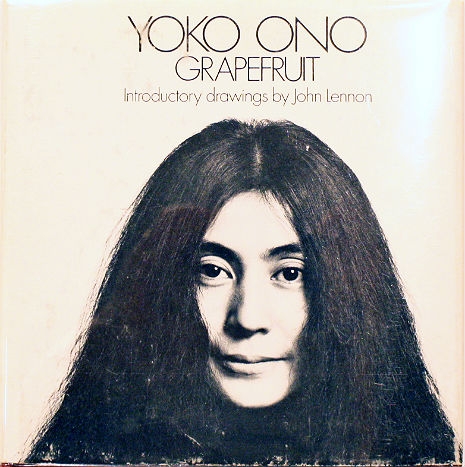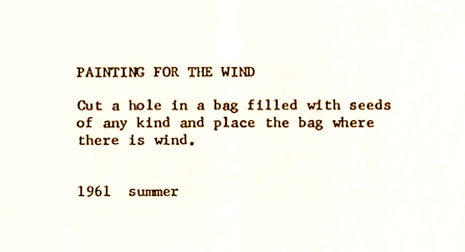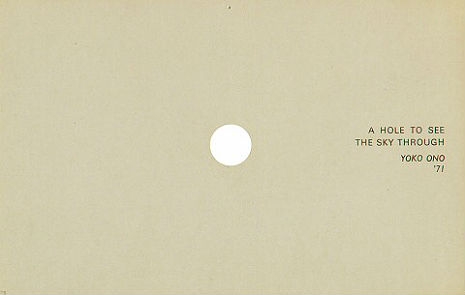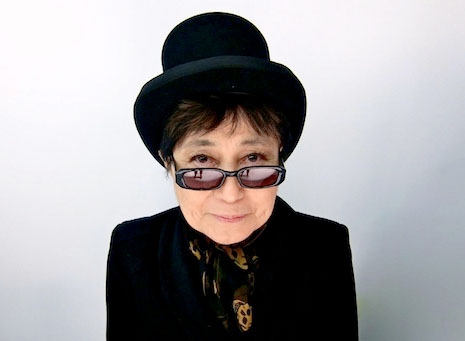
As Yoko Ono’s Plastic Ono Band, reconstituted in 2009 after a 34-year silence, prepares to release Take Me to the Land of Hell, it seems as good a time as any for a big ol’ info-dump. Allons y!

For many years, Yoko Ono was married to Mr. John Lennon, who was one of the chief songwriters for a band called The Beatles. They did some really, really cool shit. If you’re in the dark on that band, or only glancingly familiar, you should really look them up. Some books are available.
Even if Ono hadn’t married a superstar, she’d be worth knowing about. An early mover in the Dada-like Fluxus art movement, she distanced herself from the group almost as soon as it became a movement with a name:
“I thought avant-garde world in New York was still very exciting but that it was starting to become an institution in itself, and there were rules and regulations in an invisible way, and I just wanted to get out of it. I never considered myself a member of any group. I was just doing my own thing, and I’m sure that most artists I knew in those days felt the same.”
Despite her refusenik status, Ono remains Fluxus’ best-known alumnus, and has been as important a figure in the development of American Conceptual Art as John Cage, Chris Burden, or John Baldessari. She initially became known for performances like “Cut Piece,” in which viewers were invited to approach her with scissors as she sat still, cutting off pieces of her clothing until she was entirely naked. Arguably, her most enduring non-musical works are her Instruction pieces - widely disseminated in her now-classic (and pretty much essential) book Grapefruit - participatory/hueristic koan-like invitations for readers to complete artworks in their minds.

Ono’s music career began years before her association with John Lennon. She collaborated with the likes of John Cage and Ornette Coleman in the early ‘60s. It was with Lennon, though, that she began to work within the rock process, and at the same time, he began to bring avant-garde ideas gleaned from Ono to bear in some of The Beatles’ work. Ono’s contributions to both rock and experimental music have long been championed by adventurous musicians starting as early as the Punk and New Wave era (surprising, given the anathema status of The Beatles’ undeniable Summer Of Love associations to Punk’s hippie-hating year zero ethos), a love affair that saw a culmination in the 2007 compilation Yes, I’m A Witch, which saw contemporary artists creating new music beds for a career-spanning selection of Ono’s vocal tracks. Peaches’ update of “Kiss Kiss Kiss” and Cat Power’s “duet” with Ono on “Revelations” are both absolutely stunning.

In 2001, The Japan Society Gallery in NYC hosted an exhibit called YES YOKO ONO, her first American retrospective:
The exhibition explored Ono’s position within the postwar international avant-garde, and her critical and influential role in originating forms of contemporary art, music, film and performance. Featuring approximately 130 works from the 1960s to the present, it presented Ono as a key transmitter of Asian thought to the international art world, through her use of chance and minimalism, and her investigation of everyday life.
The exhibition toured, and its catalogue is an excellent staring point for understanding her career. Currently, an even larger retrospective is touring the museums of Europe, coinciding with Ono’s 80th year.

Fact: if you hate Yoko Ono because “derrr she dun broked up da BEEEEAAAATLES” or because “she don’t even sing or nothin’, she just wails a buncha nonsense,” you’re a useless ass and you need to get your god damn fool eyes off my article right now and go use your valuable Internet time to look at some image macros of funny kittycats. NOW. I’m not even slightly kidding. Go get fitted for a new droolcup. (previous) (previouser). Fuck off, even.
The first iteration of the Plastic Ono Band was comprised of whoever happened to be present (including Tommy Smothers!) singing along and clapping their hands at Ono and Lennon’s Montreal “Bed Peace” performance in July of 1969, while the single “Give Peace A Chance” was recorded. The first properly band-like version was assembled in September 1969 for the Toronto Rock And Roll Revival festival, and featured, in addition to Ono and Lennon, future Yes drummer Alan White, noteworthy visual artist and onetime Manfred Mann bassist Klaus Voormann, and one Eric Clapton, who did some other fairly well known stuff himself.
The first Plastic Ono Band studio albums were a matched set of recordings with very nearly identical covers, one under Ono’s name, one under Lennon’s, both credited “and the Plastic Ono Band.” Decent copies of Lennon’s version can be found in thrift stores for pocket change, while Ono’s has become a sought-after collectable.

Ono has been posting a new song from the forthcoming album every week on the Plastic Ono Band’s web site, culminating on Take Me to the Land of Hell being streamable by the release date, September 17, 2013. Check out “Bad Dancer,” featuring Beastie Boys Mike Diamond and Adam Horovitz.
Lastly, from just a couple of months ago: whoa, this is cool.
Previously on Dangerous Minds:
John Cage chats with John Lennon & Yoko Ono (1972)
Yoko Ono: Twitter Q & A
Meditating On Cancer With Adam Yauch And Yoko Ono
Happy 80th Birthday Yoko Ono
‘Freedom’: Yoko Ono almost takes her bra off, while John Lennon makes electronic noises
The making of John and Yoko’s Plastic Ono Band LPs